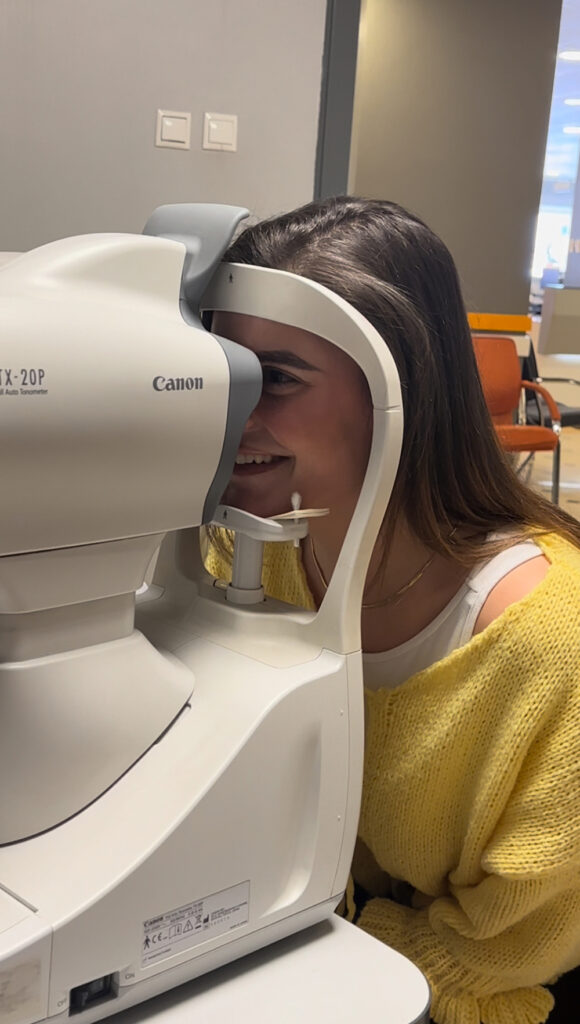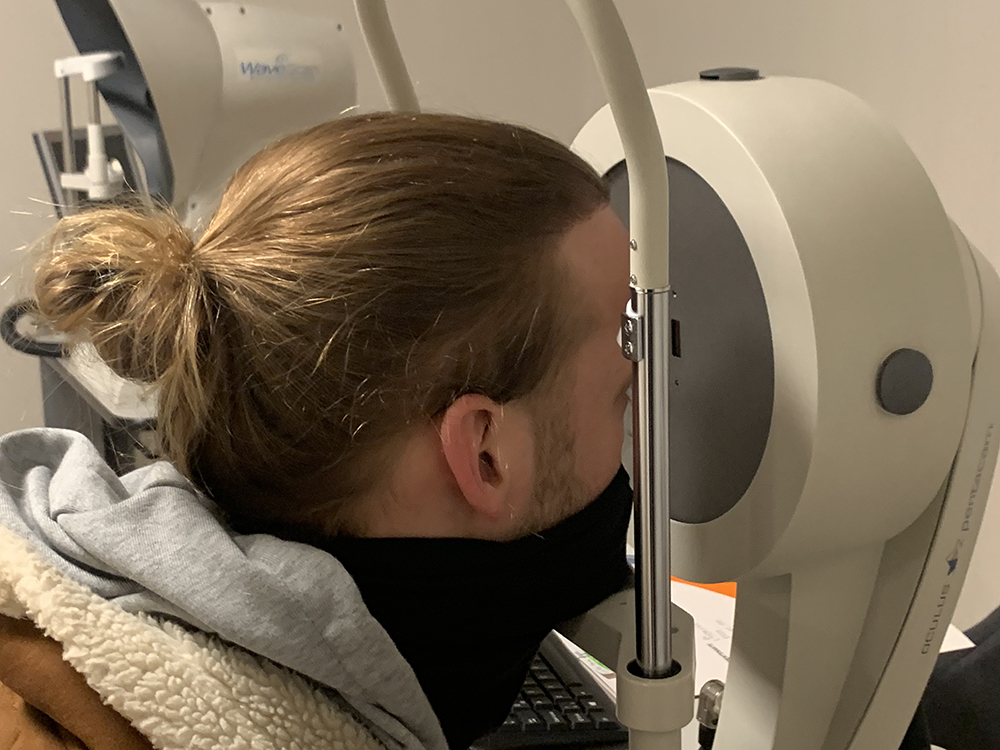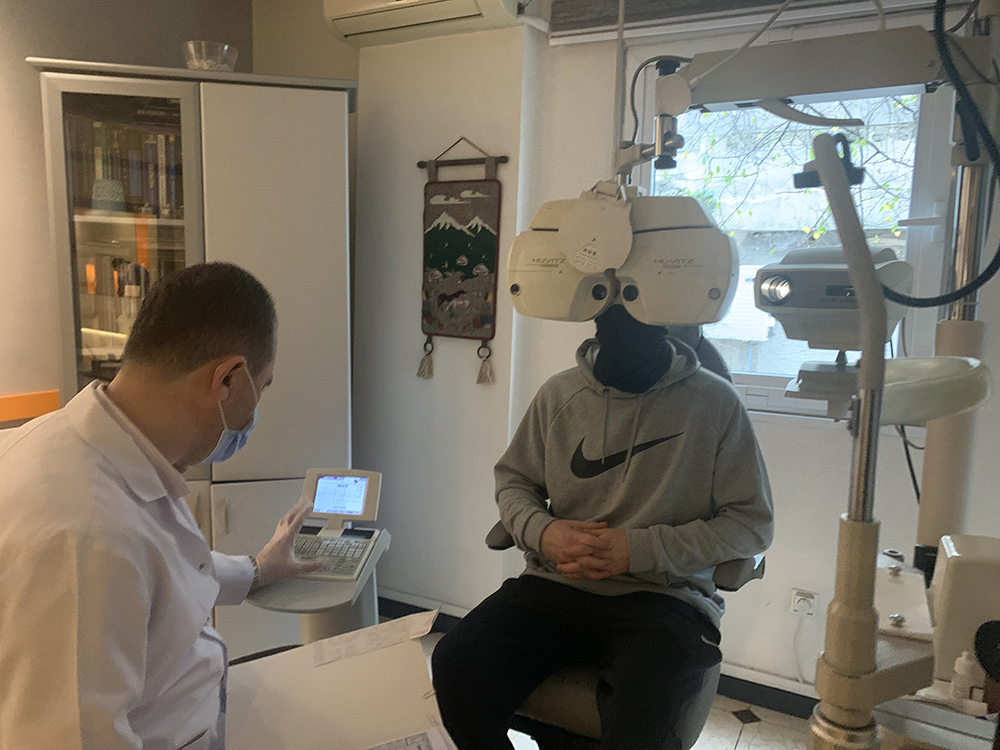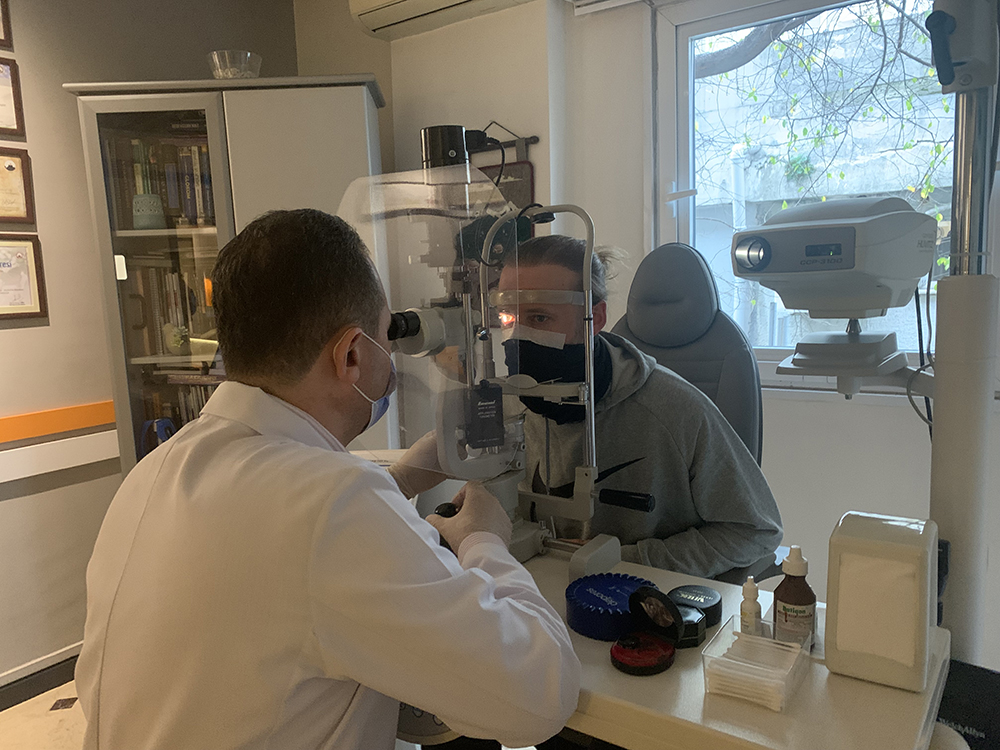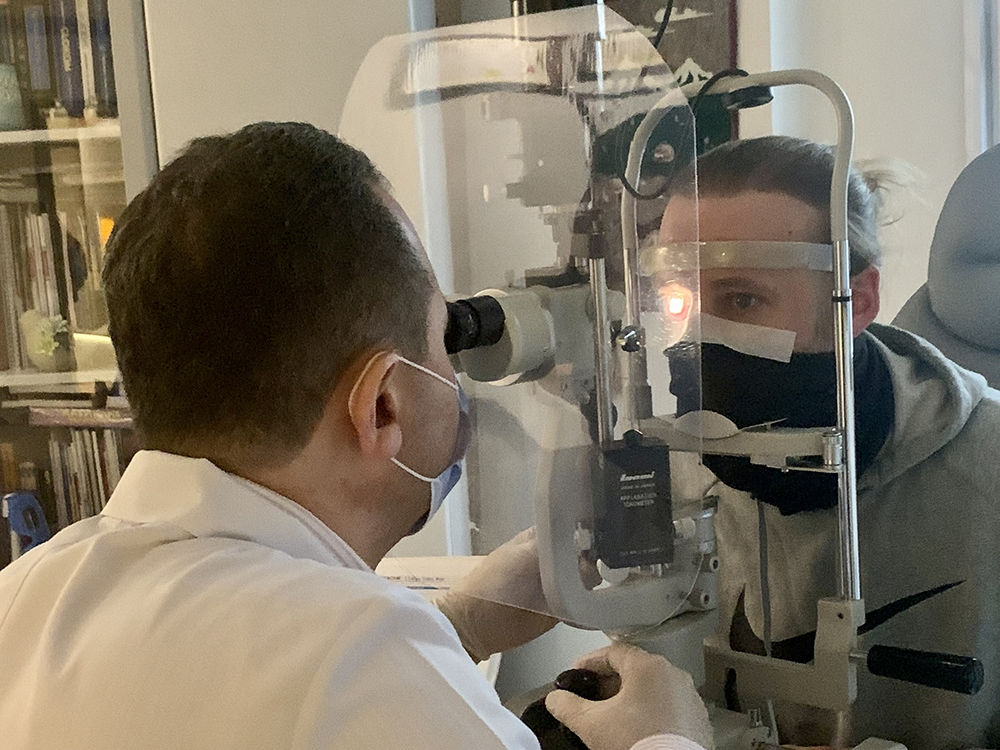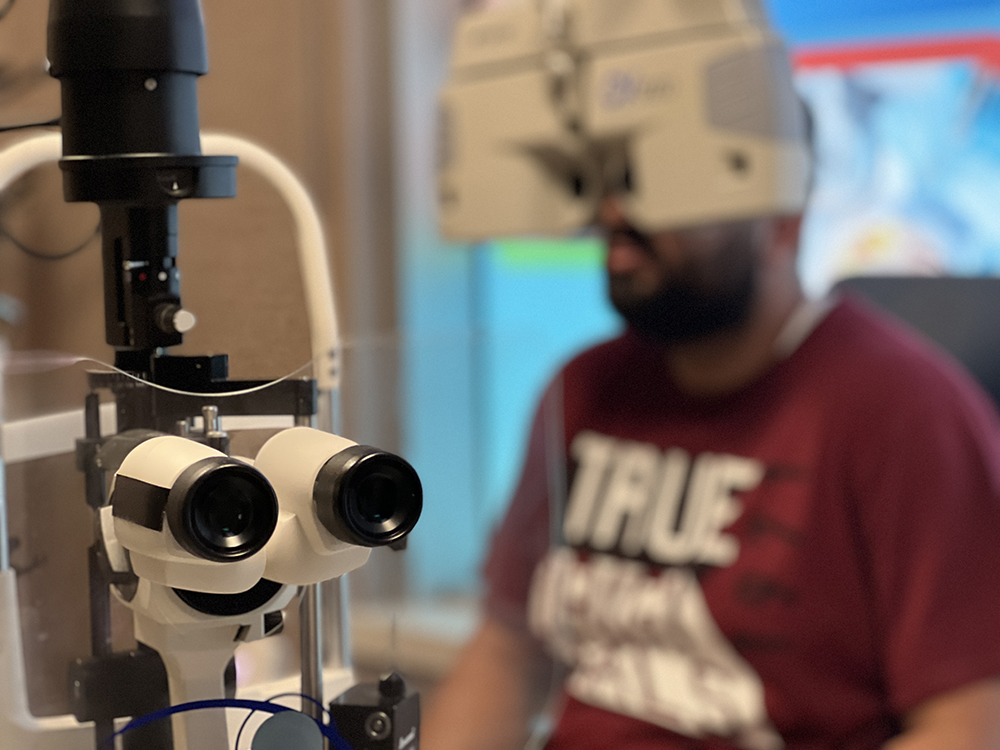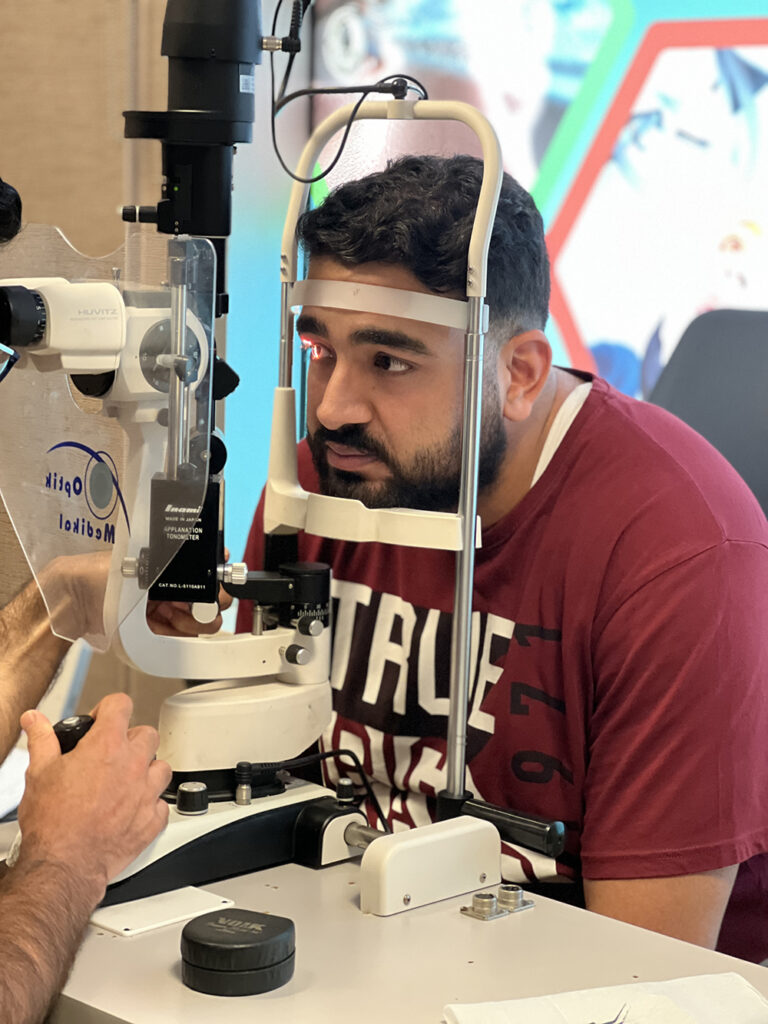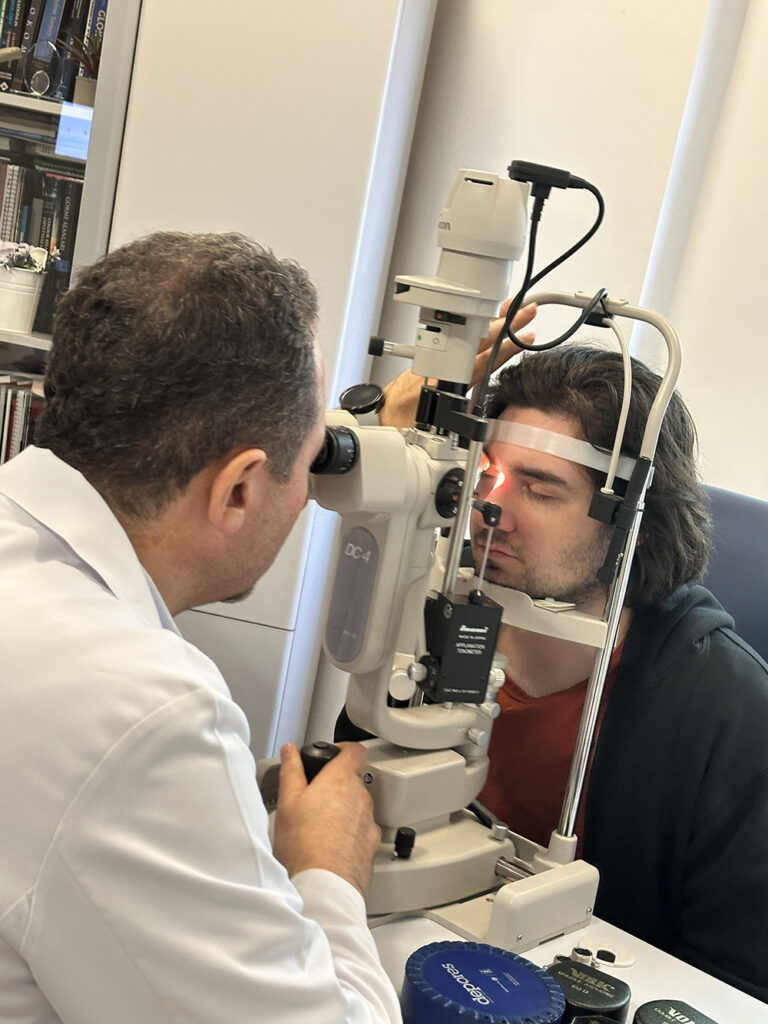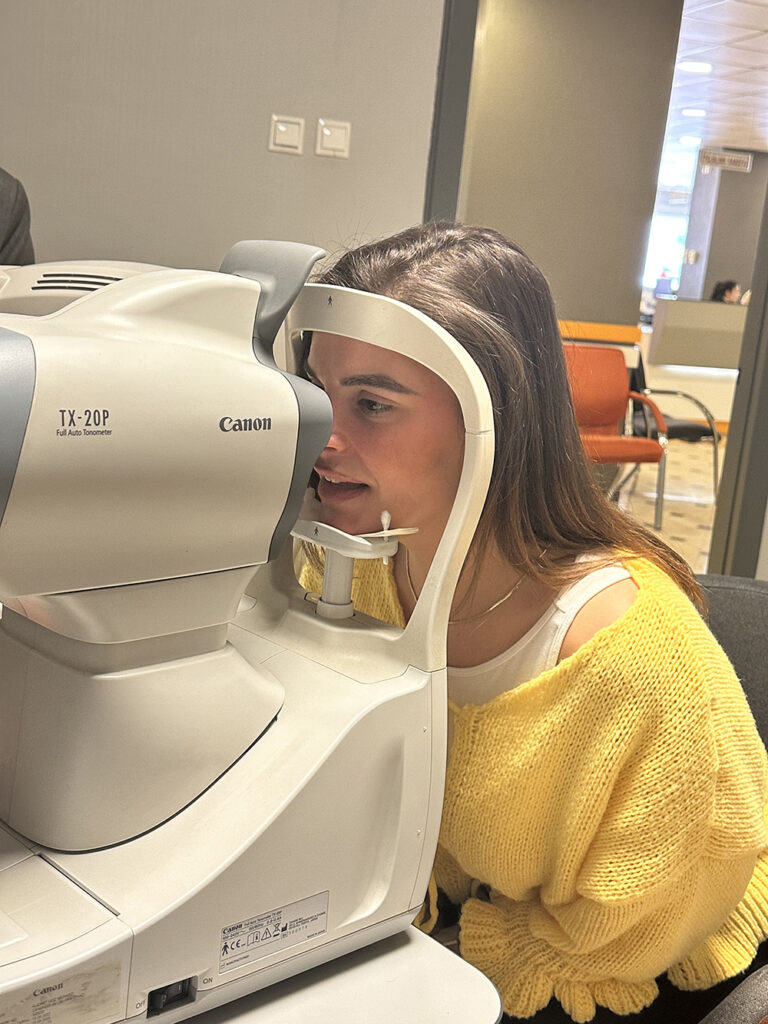Smart lenses are advanced intraocular lenses designed to replace the natural lens, providing clear vision at all distances without the need for glasses. They are ideal for individuals with presbyopia, cataracts, or refractive errors. At First Class Esthetic, we offer personalized smart lens solutions to enhance your vision and improve your quality of life.
What are the Advantages of Multifocal Lenses?
Reduced Need for Glasses or Contact Lenses
Multifocal lenses significantly reduce the need for glasses or contact lenses. They offer a single lens solution, especially for individuals with both distance and near vision impairment. This provides great comfort in daily life.
Multifocal Lens Use in Cataract Surgery
Multifocal lenses are often preferred during cataract surgeries. Cataract is an age-related clouding of the lens of the eye and requires surgical intervention. Multifocal lenses both remove cataracts and correct visual disturbances after cataract surgery.
Improved Quality of Vision: Multifocal Lenses Provide Clear Vision
These lenses provide clear vision at both near and far distances. Thanks to the different focal points within the eye, lens wearers can achieve clear vision both while working on a computer screen and while driving a car.
Comfort and Convenience Features of Multifocal Lenses
Multifocal lenses are long-lasting and improve the patient’s quality of life, making them more attractive than other treatment modalities. Patients can return to their normal lives shortly after lens implantation. Portrait of a beautiful brown-eyed girl in nature
Are There Any Disadvantages of Using Multifocal Lenses?
Although multifocal lenses have many advantages, they also have some disadvantages. Users may experience temporary side effects such as blurred vision or dizziness until they get used to the lenses. This can vary depending on the design of the lens and the user’s eye structure. Also, the cost of multifocal lenses may be higher than standard lenses. Some users may find that the lenses require more time and effort to maintain and clean. Finally, it should be noted that multifocal lenses may not be suitable for every wearer and should therefore be evaluated in detail with an ophthalmologist.
What Are the Differences Between Smart Lenses and Traditional Glasses?
The most obvious difference between smart lenses and traditional eyeglasses is their intended use. Smart lenses are contact lenses that are worn directly on the eyes and help to improve or correct vision. They usually have a thinner and lighter structure, which offers a wider visual field and eliminates the pressure caused by glasses. However, smart lenses can be customized to correct different eye conditions and can be designed according to the needs of the wearer. Traditional glasses, on the other hand, are used in conjunction with a spectacle frame and can be more easily put on and taken off by many people, while offering more aesthetic options. Also, glasses require less maintenance, while smart lenses require regular cleaning and care, which is an important factor. While both options are intended for vision correction, users’ choice often depends on comfort, aesthetics and lifestyle.
What Are Intraocular Lens Types?
Monofocal Lenses Single Focus Intraocular Lenses Monofocal lenses have only one focal point and are usually used to see objects at a distance clearly. However, to see objects at close range with these lenses, glasses are required.
Bifocal Lenses: Lenses that Provide Both Near and Far Vision
Bifocal lenses provide both near and far vision, but are not effective for objects at medium distances (about 40 cm – 2 meters). These lenses are an older technology than multifocal lenses.
Trifocal Lenses: Trifocal Intraocular Lenses
Trifocal lenses have three different focal points and provide clear vision at all distances. These lenses are an ideal option, especially for people over the age of 50 and those with cataracts. These lenses also protect the eyes from the harmful rays of the sun.
Who Are Multifocal Lenses Suitable for?
Multifocal lenses may not be suitable for every patient. In this section, we will discuss who are suitable candidates for multifocal lenses and in which cases these lenses should be preferred. Especially patients who will undergo cataract surgery, individuals with myopia and hyperopia problems can benefit from these lenses.
What Should Be Considered When Wearing Multifocal Lenses?
There are several important considerations when wearing multifocal lenses. First of all, correct lens fitting is critical for visual comfort and clarity. Lenses should be selected in accordance with the user’s eye structure and visual needs. It should be remembered that hands should be clean before and after lens wear. Also, when starting to wear lenses, attention should be paid to the adaptation process of the eyes during the transition period, during which some users may experience side effects such as blurred vision or dizziness. It is therefore advisable to consult an ophthalmologist if any discomfort is experienced during lens wear.
How to Care for Multifocal Lenses?
Caring for multifocal lenses is of great importance to prolong the life of the lenses and protect eye health. First, you should wash your hands thoroughly before using your lenses every day and keep your lenses on a clean surface. When removing your lenses every day, it is important to wipe them gently using a special lens cleaning solution. Remember to remove and clean your lenses every day and rinse the lens storage container with clean water each time and place it in fresh solution. You should also never clean your lenses with water, soap or saliva, as these substances can damage your lenses. It is also recommended that you visit your ophthalmologist regularly to have your lenses checked and replaced if necessary for healthy wear.
What are the Prices of Multifocal Lenses in Turkey?
The prices of multifocal lenses in Turkey vary depending on the brand, type and features of the lens. Lenses with special features (for example, UV protection or dry eye reduction) are usually sold at higher prices. Users should compare different brands and models and consider the recommendations of a qualified ophthalmologist when selecting lenses to suit their needs and budget
Multifocal Lens; It is defined as a special intraocular lens that can show near and far at the same time.
What Are The Advantages Of Multifocal Lens?
- People with vision defects used two separate glasses for both farsightedness (nearsightedness) and nearsightedness (farsightedness) until recently.
- Afterwards, this situation was tried to be solved with a single pair of glasses that provide both distance and near vision. However, with the advancing technology, significant positive contributions have been made to these problems in both the vision and comfort of the person, thanks to the Multifocal lens, namely Smart lenses.
- Thanks to the rings in the intraocular lens, the person has the opportunity to see both near and far. Multifocal lenses reduce or eliminate the need for glasses or contact lenses.
- One of the most important features of these lenses is; In patients who need cataract surgery, during the procedure, cataract is eliminated and a solution has been found for the defects in distance or near visions. This situation provides a great advantage for the person being treated.
- Another important detail in the multifocal lens method is; the size of the individual’s pupils and whether he or she has any other eye disorder / condition.
- Since the lens to be placed in the eye will remain in the eye of the person throughout life, your specialist will make the right lens selection for you after all the necessary tests and controls to be performed at this point.
- Since smart lenses are designed to facilitate the operation and allow it to be completed in a short time, the person can return to his normal life immediately after the operation.
What Are The Types And Features Of Intraocular Lens?
Monofocal lens: As the name suggests, they are single-focal lenses that allow the person to see far, but require glasses to be used to see near. Bifocal lens: These are the lenses that the person sees both near and far without glasses but cannot see the distance between 40 cm and 2 meters. Trifocal lens: This type of lens is three-focus lenses that offer a definite solution. The person can see far and close without any distance limitation. Another feature of this lens is; It has the ability to protect your eyes from the harmful rays of the sun and also from diseases that may occur due to age. Trifocal lenses are used in people over 50 years of age with cataracts. As an exception, laser surgeries such as Lasik are not very suitable for patients over the age of 40, and cataract surgery can be performed in patients who do not want to use near and far glasses and who experience impaired vision before cataract formation, and such lenses can be applied. For detailed information about the multifocal lens, you can contact us by clicking the link.
Contact Us
For detailed information please contact us by filling out the form below.


